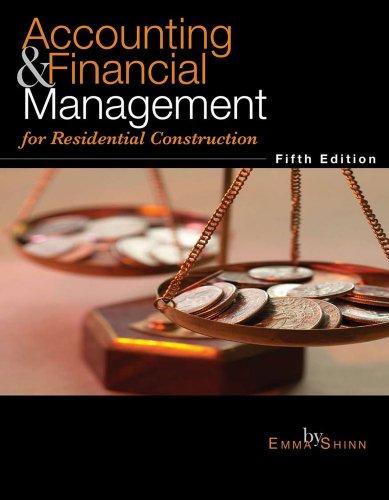Journal entry worksheet Record collection of an account receivable previously written off. Note: Enter debits before credits. Journal entry worksheet Record entry to reinstate an account receivable previously written off. Note: Enter debits before credits. Prepare the year-end adjusting entry for bad debts according to each of the following situations: a. Bad debt expense is estimated to be 3% of credit sales for the year. b. Bad debt expense is estimated by adjusting the allowance for uncollectible accounts to the balance that reduces the carrying value of accounts receivable to the amount of cash expected to be collected. The allowance for uncollectible accounts is estimated to be 10% of the year-end balance in accounts recelvable. c. Bad debt expense is estimated by adjusting the allowance for uncollectible accounts to the balance that reduces the carrying value of accounts recelvable to the amount of cash expected to be collected. The allowance for uncollectible accounts is determined by an aging of accounts receivable. Note: If no entry is required for a transaction/event, select "No journal entry required" in the first account field. Journal entry worksheet Bad debt expense is estimated to be 3% of credit sales for the year. Note: Enter debits before credits. Problem 7-4 (Algo) Uncollectible accounts; financial statement effects [LO7-5, 7.6] Raintree Cosmetic Company sells its products to customers on a credit basis. An adjusting entry for bad debt expense is recorded only at December 31 , the company's fiscal yeat-end. The 2023 balance sheet disclosed the following: Current assets: Receivables, net of allowance for uncollectible accounts of 550,0a0 $532,000 During 2024 , credit sales were $1,850,000, cash collections from customers $1,930,000, and $59,000 in accounts recelvable were written oft. In addition, $5,000 was collected from a customer whose account was written off in 2023 . An aging of accounts recelvable at December 31,2024 , feveals the following: Required: 1. Prepare summary joumal entries to occount for the 2024 write-offs and the collection of the recelvable previously written off. 2. Prepare the year-end adjusting entry for bed debts according to each of the following situotions: a. Bad debt expense is estimated to be 3% of credit sales for the yeat. b. Bad debt expense is estimated by adjusting the allowance for uncollectible accounts to the balance that reduces the carrying value of accounts receivable to the amount of cash expected to be collected. The allowance for uncollectible accounts is estimated to be 105 of the year-end balance in accounts recelvable. c. Bad debt expense is estimated by adjusting the allowance for uncollectible accounts to the balance that reduces the carrying value of accounts recelvablo to the amount of cash expected to be collected. The allowance for uncollectibie accounts is determined by an aging of accounts receivable. 3. For situations (a)(c) in requirement 2 above, what would be the net amount of accounts recelvable reported in the 2024 balance. Prepare the year-end adjusting entry for bad debts according to each of the following situations: a. Bad debt expense is estimated to be 3% of credit sales for the year. b. Bad debt expense is estimated by adjusting the allowance for uncoliectible accounts to the balance that reduces the carrying value of accounts recelvable to the amount of cash expected to be collected. The allowance for uncollectible accounts is estimated to be 10% of the year-end balance in accounts receivable. c. Bad debt expense is estimated by adjusting the allowance for uncollectible accounts to the balance that reduces the carrying value of accounts receivable to the amount of cash expected to be collected. The allowance for uncollectible accounts is determined by an aging of accounts recelvable. Note: If no entry is required for a transaction/event, select "No journal entry required" in the first account field. Journal entry worksheet Bad debt expense is estimated by adjusting the allowance for uncollectible accounts to the balance that reduces the carrying value of accounts receivable to the amount of cash expected to be collected. The allowance for uncollectible accounts is determined by an aging of accounts recelvable. Note: Enter debits before credits. Prepare the year-end adjusting entry for bad debts according to each of the following situations: a. Bad debt expense is estimated to be 3% of credit sales for the year. b. Bad debt expense is estimated by adjusting the allowance for uncollectible accounts to the balance that reduces the carrying value of accounts recelvable to the amount of cash expected to be collected. The allowance for uncollectible accounts is estimated to be 10% of the year-end balance in accounts recelvable. c. Bad debt expense is estimated by adjusting the allowance for uncollectible accounts to the balance that reduces the carrying value of accounts recelvable to the amount of cash expected to be collected. The allowance for uncollectible accounts is determined by an aging of accounts recelvable. Note: If no entry is required for a transaction/event, select "No journal entry required" in the first account field. Journal entry worksheet Bad debt expense is estimated by adjusting the allowance for uncollectible accounts to the balance that reduces the carrying value of accounts recelvable to the amount of cash expected to be collected. The allowance for uncollectible accounts is estimated to be 10% of the year-end balance in accounts Note: Enter debits before credits Prepare summary journal entries to account for the 2024 write-offs and the collection of the recelvable previously written off. Note: If no entry is requlred for a transactionvevent, select "No joumal entry required" in the first account fleid. Journal entry worksheet Record accounts recelvable written off durikb the year 2024 Notel Enter debits before credits














